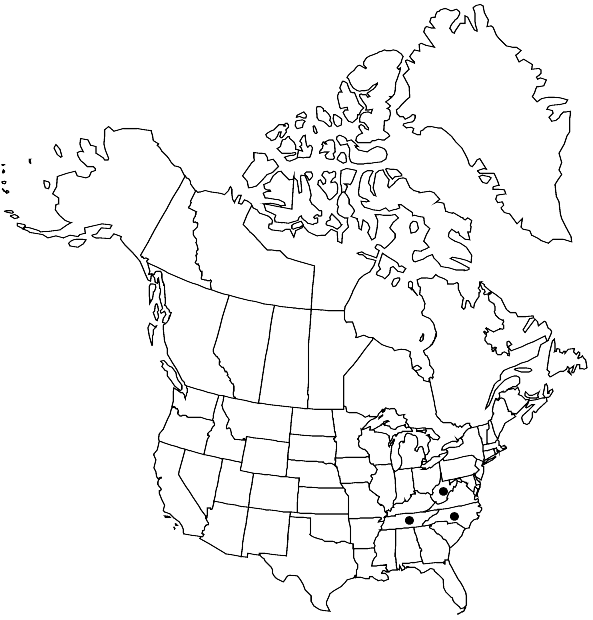Difference between revisions of "Rhachithecium perpusillum"
in H. G. A. Engler and K. Prantl, Nat. Pflanzenfam. 234/235[I,3]: 1199. 1909,.
FNA>Volume Importer |
imported>Volume Importer |
||
| (6 intermediate revisions by 2 users not shown) | |||
| Line 1: | Line 1: | ||
{{Treatment/ID | {{Treatment/ID | ||
|accepted_name=Rhachithecium perpusillum | |accepted_name=Rhachithecium perpusillum | ||
| − | |accepted_authority=(Thwaites & Mitten) Brotherus | + | |accepted_authority=(Thwaites & Mitten) Brotherus |
|publications={{Treatment/Publication | |publications={{Treatment/Publication | ||
|title=in H. G. A. Engler and K. Prantl, Nat. Pflanzenfam. | |title=in H. G. A. Engler and K. Prantl, Nat. Pflanzenfam. | ||
|place=234/235[I,3]: 1199. 1909, | |place=234/235[I,3]: 1199. 1909, | ||
}} | }} | ||
| − | |basionyms={{Treatment/ID/ | + | |basionyms={{Treatment/ID/Basionym |
|name=Zygodon perpusillus | |name=Zygodon perpusillus | ||
|authority=Thwaites & Mitten | |authority=Thwaites & Mitten | ||
| + | |rank=species | ||
| + | |publication_title=J. Linn. Soc., Bot. | ||
| + | |publication_place=13: 303. 1873 | ||
}} | }} | ||
|synonyms={{Treatment/ID/Synonym | |synonyms={{Treatment/ID/Synonym | ||
|name=Hypnodon perpusillus | |name=Hypnodon perpusillus | ||
|authority=(Thwaites & Mitten) Müller Hal. | |authority=(Thwaites & Mitten) Müller Hal. | ||
| − | }}{{Treatment/ID/Synonym | + | |rank=species |
| + | }} {{Treatment/ID/Synonym | ||
|name=Tortula propagulosa | |name=Tortula propagulosa | ||
|authority=Sharp | |authority=Sharp | ||
| + | |rank=species | ||
}} | }} | ||
|hierarchy=Rhachitheciaceae;Rhachithecium;Rhachithecium perpusillum | |hierarchy=Rhachitheciaceae;Rhachithecium;Rhachithecium perpusillum | ||
| Line 39: | Line 44: | ||
-->{{#Taxon: | -->{{#Taxon: | ||
name=Rhachithecium perpusillum | name=Rhachithecium perpusillum | ||
| − | + | |authority=(Thwaites & Mitten) Brotherus | |
| − | |authority=(Thwaites & Mitten) Brotherus | ||
|rank=species | |rank=species | ||
|parent rank=genus | |parent rank=genus | ||
| Line 53: | Line 57: | ||
|publication year= | |publication year= | ||
|special status= | |special status= | ||
| − | |source xml=https:// | + | |source xml=https://bitbucket.org/aafc-mbb/fna-data-curation/src/2e0870ddd59836b60bcf96646a41e87ea5a5943a/coarse_grained_fna_xml/V27/V27_681.xml |
|genus=Rhachithecium | |genus=Rhachithecium | ||
|species=Rhachithecium perpusillum | |species=Rhachithecium perpusillum | ||
Latest revision as of 21:27, 5 November 2020
Plants rarely to 4 mm. Stems typically unbranched. Leaves acute, to 1 × 0.3 mm, margin entire to crenulate; proximal cells to 45 × 12 µm; medial and distal cells quadrate to hexagonal, somewhat bulging, 15–25 µm wide, marginal cells often smaller, 6–12 µm; costa between 2/3 and 3/4 of leaf length. Specialized asexual reproduction by gemmae, cylindrical to slightly club-shaped, 1–2-seriate, to 160 µm, borne near the base of the leaf. Sexual condition autoicous. Sporophytes absent in range of the flora.
Habitat: Dry or as on bark of deciduous trees, primarily elm
Elevation: moderate elevations
Distribution

N.C., Tenn., W.Va., Mexico, South America (Argentina, Brazil), Asia (China, India, Sri Lanka), Indian Ocean Islands (Madagascar).
Discussion
A single population from North Carolina (Davidson, L. E. Anderson 7818, DUKE) was found to produce gametangia. The perichatium is apical and the perigonium terminates a short, subapical branch. Despite the presence of sex organs, no evidence of sexual reproduction has been found. Perichaetial leaves are not differentiated in this specimen, which may suggest that the differentiation (i.e., longer leaves) occurs following sexual reproduction. The species has only been collected once in recent years (Tennessee, J. A. Churchill 89025, 1989, DUKE). Most collections were made on elm, which has been much decimated in eastern North America. The species is distinguished by its small stature, crisped leaves when dry, thin-walled smooth cells, and abundant laminal gemmae.
Selected References
None.
